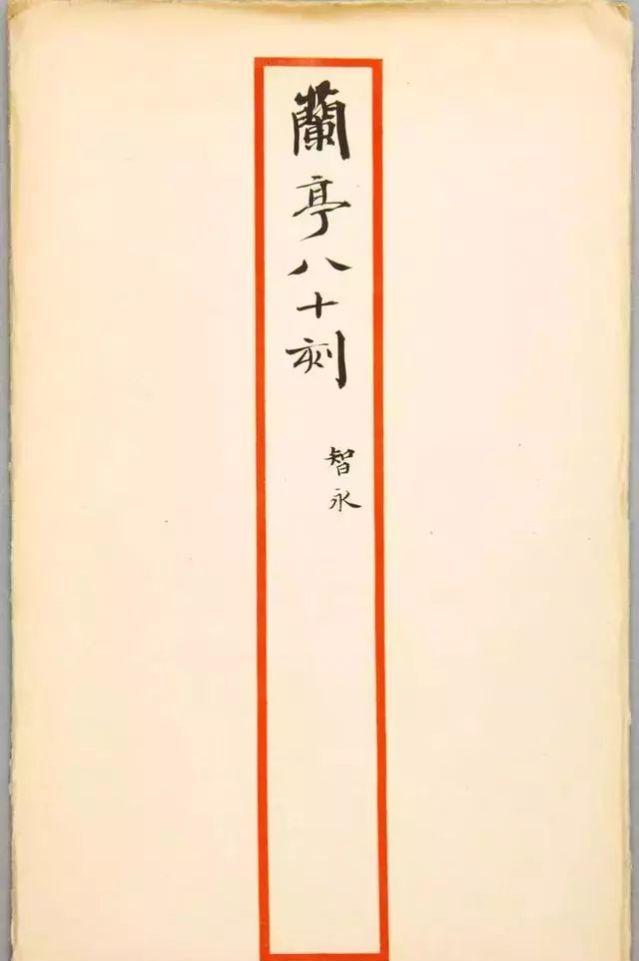Ming Tuobao Duck Jai Lan Ting Zhi Yong Cursive Book, now in the Palace Museum. The outer seal is titled "Lanting Eighty Inscribed Zhiyong". Signed "Lanting Poetry Narrative Shamen Zhiyong Book", the next paragraph "Shaoxing Bingchen July Cheng Mai Mole in Nanling County". It is a relatively rare "grass orchid pavilion".
Zhiyong cursive "Orchid Pavilion Preface", with a pen beautiful and round, clear and beautiful, the wind god is timeless, temperament and elegance. It is worthy of being the descendant of Wang Xi, who can not only strictly abide by the Wang family law, but also inherit the past and open up the future, pass on Yu Shinan and others, and open up a new style of Tang Dynasty calligraphy.

Zhiyong, a monk between Chen and Sui, is a monk with the surname Faji, surnamed Wang, Huijianren, good at calligraphy, and yougong cursive. He was the seventh grandson of Wang Xizhi and the fifth son of Wang Xizhi, after Wang Huizhi. A monk at Yongxin Monastery in Shanyin (present-day Shaoxing, Zhejiang), known as the "Yong Zen Master". He often resides in the Yongxin Temple Library, Linchi Learning Books. Thirty years of study behind closed doors. He first learned calligraphy from Xiao Ziyun, and then studied with his ancestor Wang Xizhi as his ancestor, and studied it for 30 years in the library of Yongxin Temple. Zhi Yongmiao passed on the family law, his energy was outstanding, and the Sui and Tang Dynasties rarely came to learn. A hundred years is the end. Zhiguo, Discernment, and Yu Shinan are all highly skilled in calligraphy.
Zhi Yong Shan Shu, the book has a family law. The Orchid Pavilion Preface, which wang Xizhi is used as an heirloom, was brought to Yunmen Temple for preservation. Yunmen Temple (formerly known as Yongxin Temple) has a book cabinet, and Zhiyong Zen master lived in the cabinet for 20 years, leaving behind legends such as "Retiring Pen Tomb" and "Iron Threshold".
Zhiyong greatly admired the calligraphy of Wang Xizhi and Wang Xianzhi of Naizu, and was determined to make Naizu's calligraphy pass through the ages. Zhiyong practiced calligraphy extremely hard. When he was in Yongxin Temple, he once built a small building for practicing calligraphy, and swore that "if the book is not completed, I will not go down to this building." In this cold and deserted little building, he practiced writing like a mesmerized, and the brush used one after another, and he often threw the broken brush into the big urn, and over time, he accumulated several urns. Zhiyong later buried these brushes in one place and buried them with his own inscription, which was then called "Retired Pen Tomb".
After twenty or thirty years of hard work, Zhiyong's calligraphy has indeed made great progress. His fame is also getting bigger and bigger, there are many people who seek his true deeds, and Zhiyong is always poor to cope with it, so that "the musu □ paper, piles up a few cases, and has a backlog, and the dust is born for it." There were also so many people who came to the door to ask for advice, so that his outdoor ass was often full, and even the threshold was broken, and Zhiyong had to use iron sheets to strengthen the threshold, which was called "iron threshold" at the time. This "retired pen tomb" and "iron threshold" have become good stories in the book world, and they are reflected in Han Zhangzhi's "pool water and ink" of washing pens and stones, which is also a beautiful talk through the ages.
Zhiyong had a profound influence on later generations of calligraphy. He created the "Eight Laws of Yongzi" and set an example for future generations. More than 800 copies of the "True Grass Thousand Character Text" were widely distributed and had an impact as far as Japan. Even now, it is still a classic textbook for learning calligraphy.
The graphics and text originate from the Network, if there is infringement, please contact to delete!